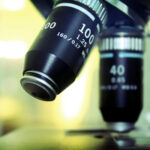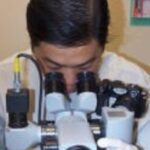A colposcopy is the standard follow-up procedure after abnormal Pap smear results. Although there is variation in follow-up protocols, usually a colposcopy is recommended after two consecutive ASCUS results or after an LSIL or HSIL result. (ASCUS is the lowest grade abnormality detected by a positive Pap test while LSIL and HSIL stand for moderate and high grade abnormalities respectively.)
The word colposcopy derives from two Greek roots: colp- (from the Greek noun kolpos = vaginal canal) and scop- (from the Greek verb skopeo = to examine). So, a colposcopy is nothing more than an examination of the vagina and cervix. This is important, because a Pap test is simply a screening tool, while a colposcopy is a diagnostic procedure.
Here is an outline of the stages before, during, and after this procedure:
Preparation
The preparation is very similar to that for a Pap test. A colposcopy cannot be performed during menstruation, as the blood cells will block the physician’s view of the vaginal and cervical tissue. Ideally, a colposcopy should be performed about 10 days after the first day of the last menstrual cycle, but this does not appear to be a stringent prerequisite. It is important to avoid tampons, douching, and vaginal medicines before the procedure. Also, abstain from sex for 24-48 hours before the colposcopy.
At the doctor’s office, you will be asked to sign a consent form. Read it carefully and ask any questions you may have. Although the colposcopy itself is not painful, it may help to take an over-the-counter pain reliever about an hour before the procedure, in case the doctor decides to take some tissue samples (biopsies).
The Procedure
During the procedure, you will be in the same position as for a Pap smear, and, as for a Pap smear, the doctor will use a speculum. This is not painful, but may cause some discomfort.
Next, the doctor will apply a concentration of acetic acid (think vinegar) to the cervix. This might or might not sting a little. The acetic acid stains abnormal cells white. These are called acetowhite areas, and the doctor will want to inspect them carefully.
The doctor examines the cervix and any abnormal areas with a special instrument, the colposcope. This is a large electric microscope that allows the doctor to examine the vaginal walls and cervix, inspect the tissue, vascular patterns, etc. The colposcope does not enter the vagina.
Sometimes another chemical solution, called Lugol’s iodine or Lugol’s solution, is applied to the cervix to help the doctor visualize any abnormalities. Lugol’s solution will not stain abnormal cells, and that is how problem areas stand out.
If any abnormalities are detected, the doctor will take biopsies. Most women report a sensation similar to a pinch or a cramp when a small tissue sample is removed.
The cervical canal is not visible through the colposcope, so the doctor will probably want to take a tissue sample from inside the canal to make sure that the cells are benign. This is called ECC (EndoCervical Curettage). The doctor uses an instrument called a curette and gently scrapes cells from the cervical canal. This usually feels like cramping, similar to menstrual cramping.
After the biopsies and ECC, the doctor will apply Monsel’s solution, a hemostatic agent, on all biopsy sites, to prevent bleeding. Monsel’s solution looks like mustard.
And that’s about it. The whole procedure normally takes up to 20 minutes.
After the Colposcopy
There are some things you need to bear in mind after a colposcopy with biopsies: Don’t douche or use tampons for about a week. Don’t lift weights. Do not practice sex for a week. Report any problems asap, for example, if you experience fever, severe abdominal pain, or heavy bleeding. Don’t be scared if you have a dark brown discharge for a few days: This is just your body expelling the chemicals used during the biopsy (acetic acid, Lugol’s, hemostatic agent).
Please remember:
A colposcopy is not a pleasant experience by any means, but it shouldn’t be a dreaded one. It does involve considerable discomfort and maybe a little pain. However, most women report that being afraid of it and not knowing what to expect was much worse than the experience itself. So, arm yourself with knowledge and optimism and just do it. You will be doing yourself a great favor.



